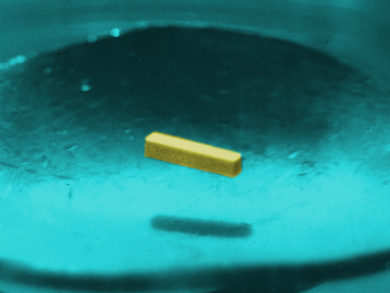Bismuth and antimony tellurides and selenides are topological insulators. The interiors of topological insulator particles behave much like conventional insulators, but the particle surfaces have electronic conducting states, which make them interesting candidates for quantum computing systems. At high pressures, several of these materials exhibit superconductivity, but this effect disappears at lower pressures.
Sergei G. Buga, Technological Institute for Superhard and Novel Carbon Materials, Moscow, Russia, and colleagues subjected several bismuth and antimony tellurides to high pressures and temperatures, followed by a rapid quench. They produced two metastable phases that were superconducting under ambient pressure: Sb2Te3 (totally superconducting below Tc = 1.75 K) and Bi2Te3 (superconducting, with residual resistance below Tc = 6 K) using this method.
These metastable phases have different crystal structures than their high-pressure counterparts, but they exhibit similar superconducting behavior. The superconducting transition critical temperatures were strongly dependent on the electrical current value, and there was no heat capacity peak at the superconducting transition. This indicates that the materials feature two-dimensional superconducting channels.
- Superconductivity in bulk polycrystalline metastable phases of Sb2Te3 and Bi2Te3 quenched after high-pressure–high-temperature treatment,
S. G. Buga, V.A. Kulbachinskii, V. G. Kytin, G. A. Kytin, I. A. Kruglov, N. A. Lvova, N. S. Perov, N. R. Serebryanaya, S. A. Tarelkin, V. D. Blank,
Chem. Phys. Lett. 2015, 631-632, 97–102.
DOI: 10.1016/j.cplett.2015.04.056



